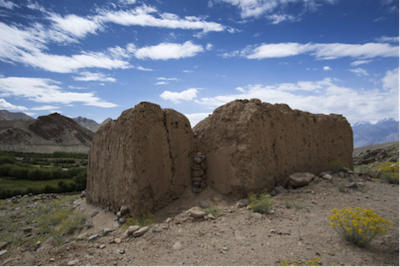Defining the ‘Second Western Tibetan School’ around 1300 in Khartse Valley, Western Tibet
by Christiane Kalantari, Professeur à l’Académie des Sciences Autrichienne de Vienne, Institute for Social Anthropology
The paper presents new research on early Buddhist art and ideology in Khartse Valley, Western Tibet (Ngari, TAR). It is based on previous unpublished detailed documentation of the late Prof. Tsering Gyalbo (1961-2015, Tibetan Academy of Sciences, Lhasa; WIKO-Fellow Berlin). It was analysed with him by the author in a multidisciplinary team in Vienna under the leadership of Mag. Dr. Jahoda, Austrian Academy of Sciences, Institute for Social Anthropology.
My aim is to present an overview of this important and as yet neglected religio-cultural landscape of Khartse valley which is a territorial division of Gu ge and known as the location of the Great Translator’s lo chen Rin chen bzang po’s ancestral home, the historical importance of Khartse lies in the fact that it belongs to the domain of an important clan, the Hrugs wer. It functioned as a local religious and political power centre of this clan. The increasing importance of the valley has to be seen in the context of the Buddhist transformation of the whole region instigated by King Ye shes ‘od. After the presentation of the topography of this valley conceived as a sacred, ritual whole and a Buddhist ordered space as analyszed by Tsering Gyalbo.
The talk will shed light on the Bardzong cave temple with its unique ensemble of different media. A focus will be the analysis of the exquisite 13th C wall-paintings in this sanctuary which have as yet not been properly realised and understood. They have a key position due cartouches with inscriptions allowing for the identification of iconography. I will argue that in the 13th can distinctive style developed continuing layers of the rich Kashmir- derivative heritage in which features of fine Newari informed traditions were integrated. All this contributed to an original and innovative stylistic tradition, to be found in the wider area in Western Tibet (TAR) and Spiti (Himachal Pradesh), and independent of prevailing trends in Central Tibet.

